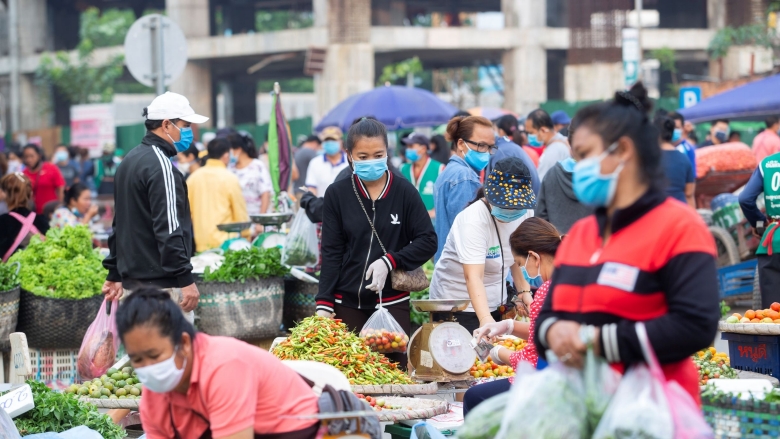The COVID-19 pandemic and its containment measures severely affected livelihoods in the Lao PDR. Laos fully reopened its international borders on May 9, 2022, and at the same time ended most social restrictions associated introduced during the pandemic. The easing of restrictions came two years after the first COVID-19 lockdown was imposed in April 2020, and followed a significant decrease in COVID-19 cases across the country and the reopening of neighboring countries.

While the negative impacts of COVID-19 appear to be receding, Laos is facing new and emerging challenges, some as aftershocks of the pandemic. COVID-19 has created global inflationary pressures as a result of disrupted supply chains and rising food and fuel prices, which have been exacerbated by the war in Ukraine. At the same time, high levels of external debt and low foreign exchange reserves have resulted in a rapid depreciation of the Lao kip, pushing up the prices of imported goods.
Although economic activities have resumed in most sectors, the recovery of the tourism sector is expected to be gradual, meaning Laos will remain short of foreign currency and the many households dependent on this sector will continue to miss revenue. The overall macroeconomic situation poses a problem for all families trying to rebuild livelihoods that were affected by the pandemic, with the kip depreciating by almost 60% over the year up to June 2022, and inflation reaching 12.8% (year-on-year) in May 2022.
To monitor the social and economic impacts of the pandemic, the World Bank is conducting a series of COVID-19 Rapid Monitoring Phone Surveys. The resulting data help provide insights into the effects of the pandemic on household well-being. The first-round survey was conducted from June 20 to July 16, 2020, when Laos had just exited the first nationwide lockdown. The second-round survey was conducted from February 26 to March 24, 2021, one year into the pandemic. A third round followed from April 26 to May 30, 2021 early in the second lockdown, and a fourth survey carried out from October 25 to November 19, 2021, as lockdown measures began to ease. The fifth and most recent round occurred April 29 to May 23, 2022.
This webpage provides links to the results of all survey rounds, plus a report on public service delivery and citizen expectations from the government response to COVID-19, drawing mainly on results from the second survey round.
The survey questionnaire is designed to cover important themes such as knowledge of COVID-19 and adoption of preventive behavior, access to food staples, food insecurity, impact of COVID-19 on economic activities and income, coping mechanisms, and access to social assistance. The results of further rounds of the survey will be published as they become available.
Last Updated: Jun 30, 2022




